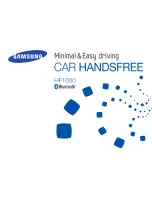
RUNNING OUT OF FUEL
Avoid running out of fuel because this situation may have an adverse
effect on powertrain components.
If you have run out of fuel:
•
You may need to cycle the ignition from off to on several times after
refueling to allow the fuel system to pump the fuel from the tank to
the engine. On restarting, crank time will be a few seconds longer
than normal. With keyless ignition, just start the engine. Crank time
will be longer than usual.
•
Normally, adding 1 gallon (3.8 liters) of fuel is enough to restart the
engine. If the vehicle is out of fuel and on a steep grade, more than
1 gallon (3.8 liters) may be required.
•
The service engine soon indicator may come on. For more information
on the service engine soon indicator, see
Warning Lamps and
Indicators
in the
Instrument Cluster
chapter.
REFUELING
WARNING:
Fuel vapor burns violently and a fuel fire can cause
severe injuries. To help avoid injuries to you and others:
•
Read and follow all the instructions on the pump island.
•
Turn off your engine when you are refueling.
•
Do not smoke if you are near fuel or refueling your vehicle.
•
Keep sparks, flames and smoking materials away from fuel.
•
Stay outside your vehicle and do not leave the fuel pump unattended
when refueling your vehicle - this is against the law in some places.
•
Keep children away from the fuel pump; never let children pump fuel.
•
Do not use personal electronic devices while refueling.
Use the following guidelines to avoid electrostatic charge build-up when
filling an ungrounded fuel container:
•
Place approved fuel container on the ground.
•
DO NOT fill a fuel container while it is in the vehicle (including the
cargo area).
•
Keep the fuel pump nozzle in contact with the fuel container while
filling.
•
DO NOT use a device that would hold the fuel pump handle in the fill
position.
Fuel and Refueling
117
2014 Econoline
(eco)
Owners Guide gf, 3rd Printing, September 2013
USA
(fus)
















































